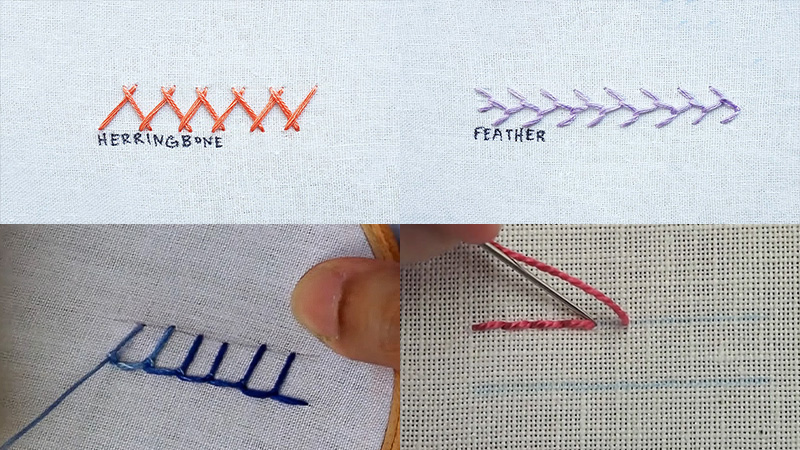
Quilting, an ancient art form, has captivated generations with its blend of practicality and artistic expression. Traditional and contemporary quilts alike are a testament to its enduring appeal.
At the heart of every quilt lies a vital element: the quilting stitch. These stitches serve as the structural backbone, lending strength and character to each creation.
From the classic to the avant-garde, the world of quilting stitches is a rich tapestry of techniques, offering endless possibilities for crafting intricate designs and textures.
In this article, we embark on a journey through the diverse realm of quilting stitches, discovering their distinct roles and artistic potential.
1. Straight stitch
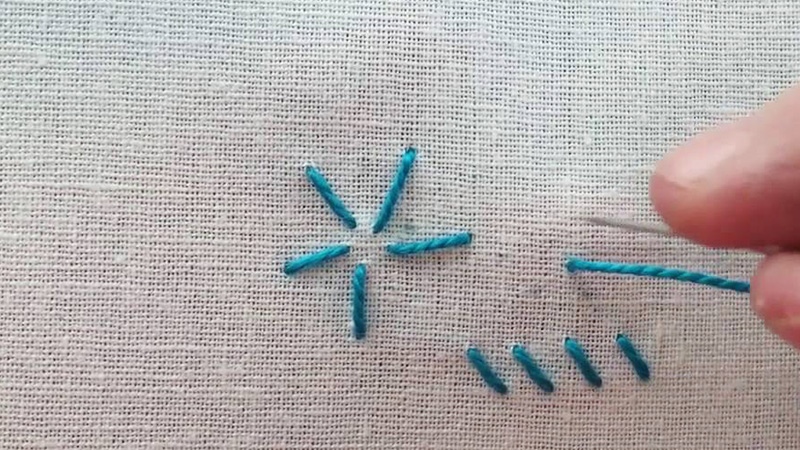
The straight or running stitch is the most fundamental stitch in hand-sewing and embroidery. It is the basis for all other forms of sewing. To create the stitch, the needle is inserted into the fabric at regular intervals and pulled through.
Other types of stitches can be created by altering the length, spacing, and direction of the straight stitch. For example, the chain stitch is created by looping the thread around the needle before it is pulled through the fabric.
The blanket stitch is created by making a small loop around the edge of the fabric before pulling the needle through the fabric. By changing the length, spacing, and direction of the stitch, a variety of different patterns can be created.
This is why the straight stitch is considered the most important stitch in hand-sewing and embroidery – it can be used to form the basis of all other stitches.
2. Backstitch
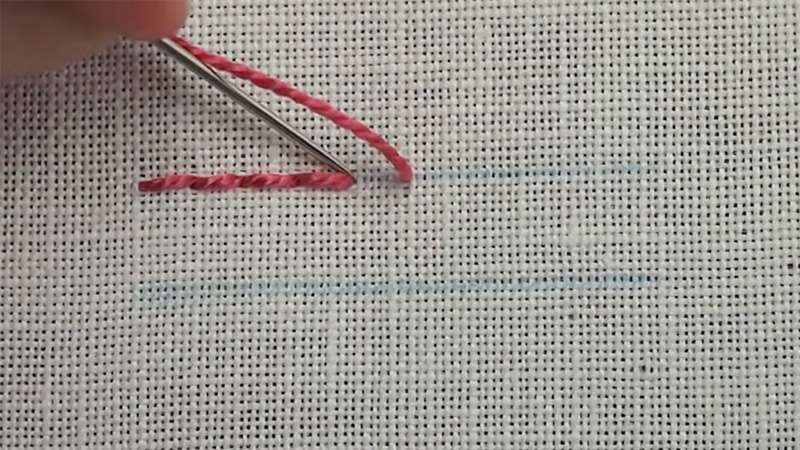
Backstitch, also known as backstitch, is a type of stitching used in both embroidery and sewing. It is a versatile stitch that is used for outlining and for filling in areas of embroidery.
It is created by stitching individual stitches backward, in the opposite direction to the general direction of sewing. This stitch can be used to create a variety of different effects. Backstitch also has several variants, such as stem stitch, outline stitch and split stitch.
Stem stitch is used to create outlines and curved lines, while outline stitch is used for outlining and filling in areas. Split stitch is used to add texture and detail to the embroidery.
All of these stitches are created by stitching individual stitches backward, in the opposite direction to the general direction of sewing. Backstitch is a very useful stitch and is used in a wide variety of applications, from clothing to accessories.
It is a versatile stitch that can be used to create beautiful embroidery designs and intricate patterns. It is also relatively easy to learn and can be used to create a variety of different effects.
3. Chain stitch
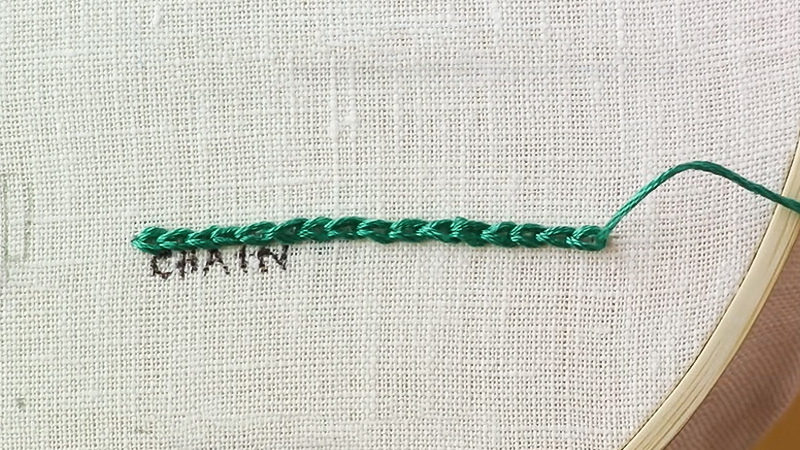
Chain stitch is a sewing and embroidery technique that is used to create a pattern of linked loops. It is considered an ancient craft, with surviving examples of Chinese chain stitch embroidery from the Warring States period (475-221 BC) having been discovered.
The embroidery is worked in silk thread, giving the work a luxurious look. Chain stitch is a versatile technique that can be used to create different types of designs. It is commonly used in embroidery and can also be used for quilting.
The loops, which are created by pulling the thread through the fabric, can be used to create various shapes and patterns. Chain stitch is often used in combination with other stitches, such as French knots, to create more complex designs.
Chain stitch is a relatively easy technique to learn, and it can be used to create beautiful and intricate designs. It is also a fast technique, as it requires fewer stitches than some other embroidery techniques.
It is also an economical technique since it only requires one strand of thread. Chain stitch is a timeless craft that has been used for centuries. Its versatility and durability make it a popular choice for both hand and machine embroidery.
Whether used to create classic designs or modern patterns, chain stitch is an excellent choice for creating beautiful and unique fabric art.
4. Blanket stitch
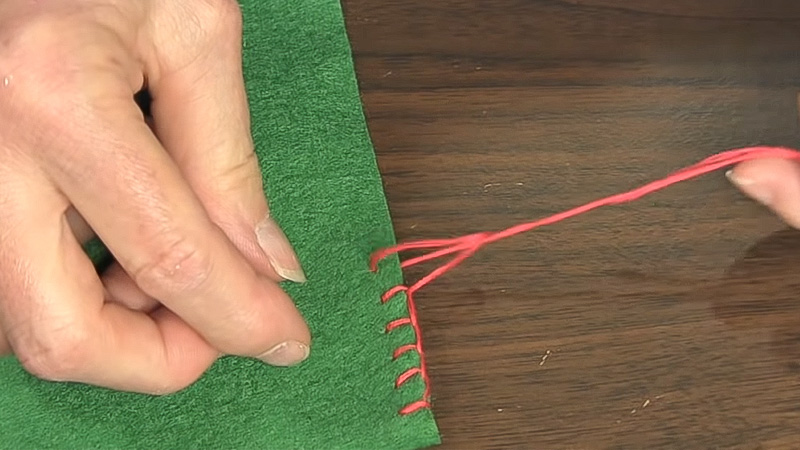
The blanket stitch is a versatile stitch used to secure and reinforce thick fabrics like fleece or wool. It is also known as a cable stitch or a crochet stitch and is used to finish an unhemmed blanket.
This stitch is visible on both sides of the blanket, giving it a decorative look. The purpose of the blanket stitch is to reinforce the edge of the fabric and prevent the fabric from fraying or unraveling.
The stitch is worked by looping the thread around the edge of the fabric, creating a chain of loops. The loops are then drawn through each other, creating a strong and secure stitch.
The blanket stitch is popular in many craft projects and can be used to create a variety of decorative effects. The stitch is also used to embellish clothing, accessories, and other items.
The blanket stitch is a simple yet effective way to finish an unhemmed blanket or other thick fabric and is an essential skill for any crafter.
5. Buttonhole stitch
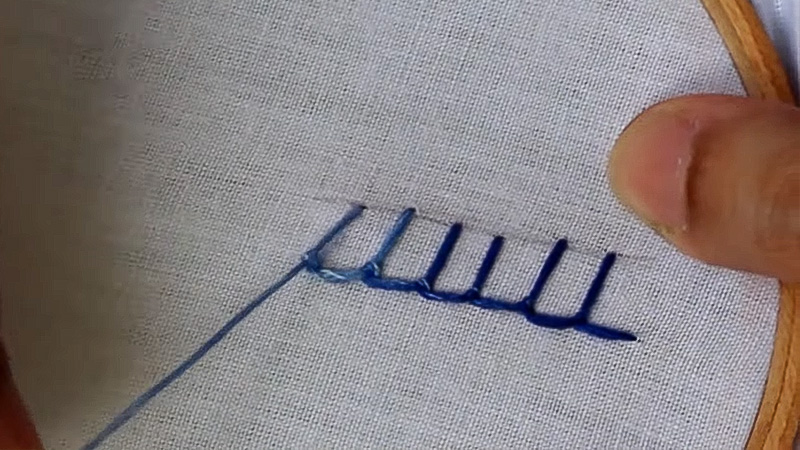
Buttonhole stitch and the related blanket stitch are two types of hand-sewing stitches commonly used in a variety of applications. Buttonhole stitch is used primarily in tailoring, while the blanket stitch is used for both tailoring and embroidery.
This stitch is also used to make needle lace. Buttonhole stitch, also known as the overcast stitch, is a stitch used to bind the edge of a fabric. It is usually used to finish the edges of a garment, such as coat or jacket, and has been used for centuries in tailoring.
The stitch involves looping the thread over the edge of the fabric and drawing it through, creating a secure and neat appearance. The blanket stitch is a variation of the buttonhole stitch and is often used in embroidery.
This stitch is used to secure edges of fabric, such as the hem of a dress, and is also used to add decorative elements to embroidered items.
In needle lace-making, the blanket stitch is used to join two pieces of fabric together. Both the buttonhole stitch and the blanket stitch are useful hand-sewing stitches, with many practical applications.
They have been used in tailoring, embroidery, and needle lace-making for centuries, and are still popular today.
6. Herringbone stitch
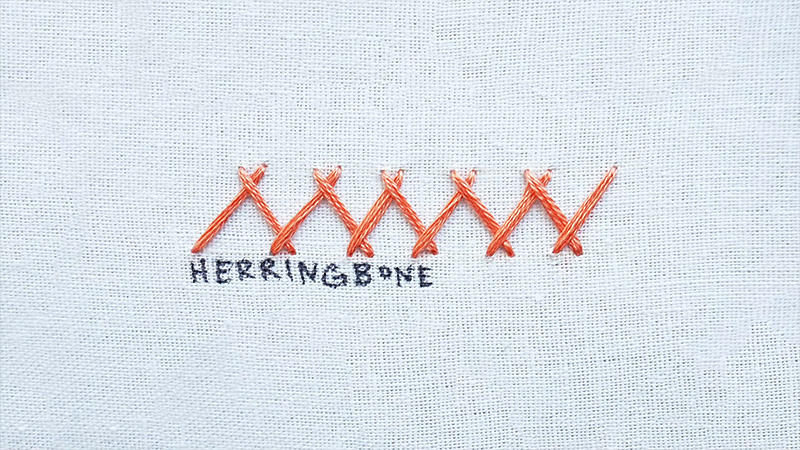
A herringbone stitch is a type of needlework used in various types of crafts. It got its name from the fact that its pattern resembles the bones extending from the spine of a herring fish. The herringbone stitch is used in embroidery, knitting and crochet.
In knitting, it creates a fabric pattern closely resembling the herringbone pattern that is found in herringbone cloth. The herringbone stitch is a versatile stitch, as it can be used to create a wide variety of textures and patterns.
It is a popular choice for garments, bags, blankets, and other items. The stitch is easy to learn and is a great way to add visual interest to a project. It is also a great stitch to use for beginners, as it is relatively simple to create and manipulate.
7. Featherstitch
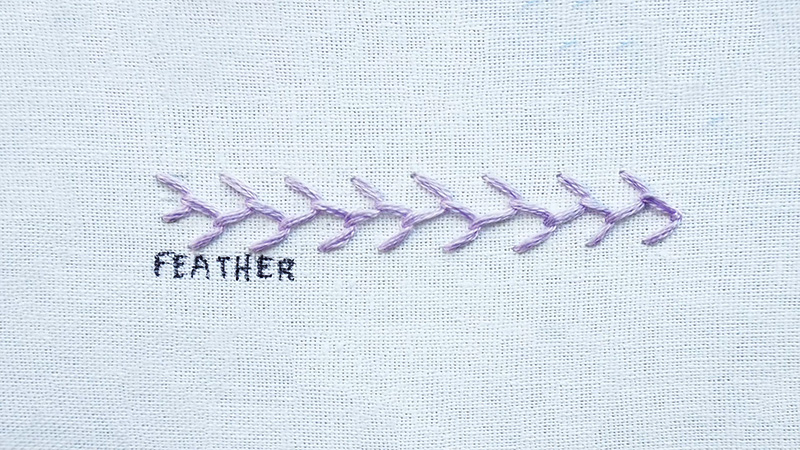
Featherstitch and Cretan stitch are both embroidery techniques that create an open, looped stitch pattern. The stitches are worked alternately to the right and left of a central rib. This technique can create a decorative, lacy look.
Fly stitch is classified as a type of featherstitch, and is often used to create an edging around a fabric piece. It is created by making a small stitch on the top of the fabric, then bringing the needle back under in a loop and out through the fabric again.
This can be repeated to create a line of looped stitches that can be used for outlining or as a decorative edge. The featherstitch and Cretan stitch techniques can be used to create delicate patterns or to add texture and visual interest to a piece of fabric.
They are both easy to learn and can be used to create a variety of effects.
8. Tack
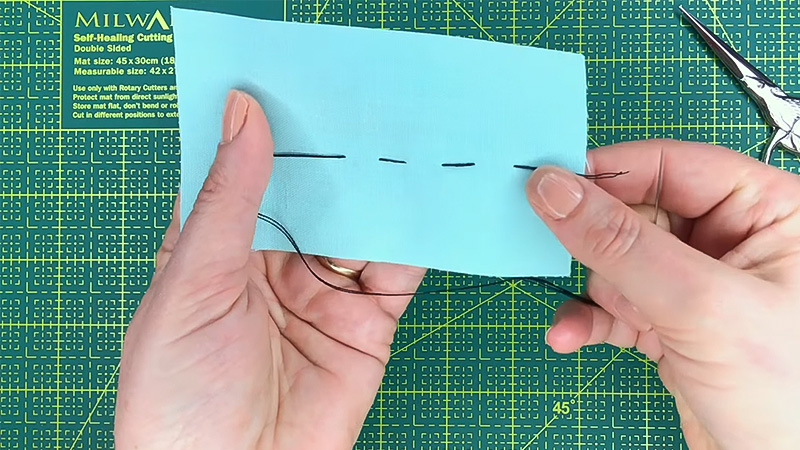
Tacking is a technique used in sewing to hold fabric in place or to mark pattern pieces. It is a simple process of stitching with thread that is not meant to be permanent and is later removed.
This type of stitching is known as basting and is used to hold fabric temporarily in place until it can be sewn properly. It is ideal for joining fabric pieces that are difficult to line up or to mark pattern pieces with ease.
Tacking can be done by hand or by machine, with hand stitches being more temporary and easy to remove. Tacking is a great way to ensure that a garment fits properly before it is sewn.
The temporary stitches allow the seamstress to try on the garment and make adjustments if necessary. It also allows the seamstress to mark pattern pieces with ease.
By tacking the pattern pieces onto the fabric, the seamstress can mark darts, pleats, and other markings that need to be transferred to the garment. Tacking is also a great way to save time.
The quick stitches allow the seamstress to complete a project faster than if they had to sew the entire seam. This is especially helpful when making clothing with multiple pieces, such as a dress or coat. Overall, tacking is an essential technique for any seamstress.
It is a quick and easy way to hold fabric in place and transfer pattern markings onto a garment. With tacking, the seamstress can save time and ensure that the garment fits properly before it is sewn.
9. Chevron stitch
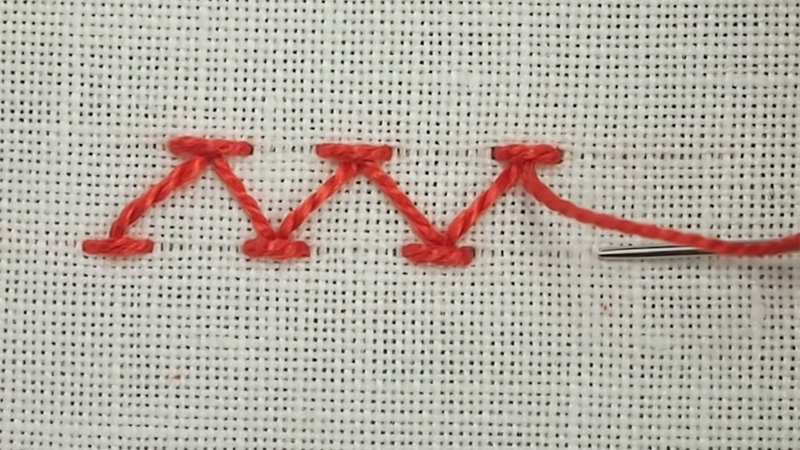
Chevron stitch is a decorative embroidery stitch characterized by its V-shaped pattern resembling a chevron or zigzag. It’s often used to create striking borders, decorative edges, or as a filling stitch in embroidery and quilting projects.
To create the chevron effect, the stitch alternates between upward and downward-slanting stitches, forming a continuous row of interconnected Vs. This versatile stitch can be adapted in various ways by changing the spacing, angle, or thread colors, allowing for a wide range of creative possibilities.
Chevron stitch adds texture and visual interest to fabric, making it a popular choice for adding flair to sewing and embroidery projects.
Conclusion
The world of quilting stitches offers a rich tapestry of possibilities for every quilter. Whether you’re a beginner or a seasoned enthusiast, there’s a stitch that will enhance your project, adding texture, design, and personality.
From the simplicity of running stitches to the artistry of intricate patterns, quilting stitches provide the means to transform fabric into cherished works of art.
With dedication and practice, anyone can craft a quilt that holds both warmth and memories. So, whether you’re quilting for practicality or creativity, embrace the vast array of stitches available, and embark on a journey of creativity and craftsmanship that will be appreciated for generations to come.
Leave a Reply